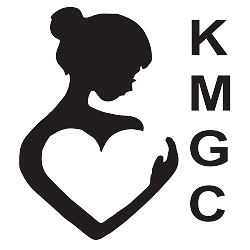Painless Labour
Painless labour, often referred to as pain-free or low-pain labour, is an aspiration for many
expectant mothers. While completely pain-free labour may not be entirely achievable, various medical
and non-medical methods can significantly reduce the pain and discomfort associated with childbirth.
Medical Methods for Pain Relief
Several medical options are available to help manage pain during labour:
Epidural Anesthesia: This is one of the most common and effective forms of pain
relief during labour. A local anesthetic is injected into the epidural space around the spinal
nerves, providing significant pain relief while allowing the mother to remain awake and alert.
Spinal Block: Similar to an epidural, a spinal block involves injecting an
anesthetic directly into the spinal fluid. It provides quick and profound pain relief, usually for a
shorter duration than an epidural.
Combined Spinal-Epidural (CSE): This technique combines the benefits of both spinal
and epidural anesthesia, offering immediate pain relief with the ability to extend the duration as
needed.
Opioids: Medications such as morphine or fentanyl can be administered via injection
or through an IV to manage pain. They can provide relief but may have side effects like drowsiness
or nausea.
Local Anesthesia: Local anesthetics can be used to numb specific areas, such as
during an episiotomy or when repairing tears.
Gas and Air (Nitrous Oxide): Also known as "laughing gas," nitrous oxide can be
inhaled through a mask to help reduce pain and anxiety during labour.
Non-Medical Methods for Pain Relief
There are also numerous non-medical techniques that can help manage labour pain:
Breathing Exercises: Practicing deep, rhythmic breathing can help manage pain and
keep you focused during contractions.
Relaxation Techniques: Methods such as visualization, meditation, and progressive
muscle relaxation can reduce tension and pain.
Hydrotherapy: Soaking in a warm bath or using a birthing pool can provide
significant pain relief and promote relaxation.
Massage: Gentle massage from a partner or doula can help ease muscle tension and
discomfort.
Movement and Positioning: Changing positions, walking, or using a birthing ball can
help manage pain and encourage labour progression.
Acupuncture and Acupressure: These traditional Chinese medicine techniques can help
manage pain by targeting specific points on the body.
Hypnobirthing: This method involves using self-hypnosis techniques to achieve a
state of deep relaxation and reduce pain perception.
Preparing for a Painless Labour
To prepare for a less painful labour experience:
Attend childbirth education classes to learn about pain relief options and techniques.
Discuss your pain management preferences with your healthcare provider and create a birth plan.
Practice relaxation and breathing exercises regularly during pregnancy.
Consider hiring a doula for additional support and guidance during labour.
